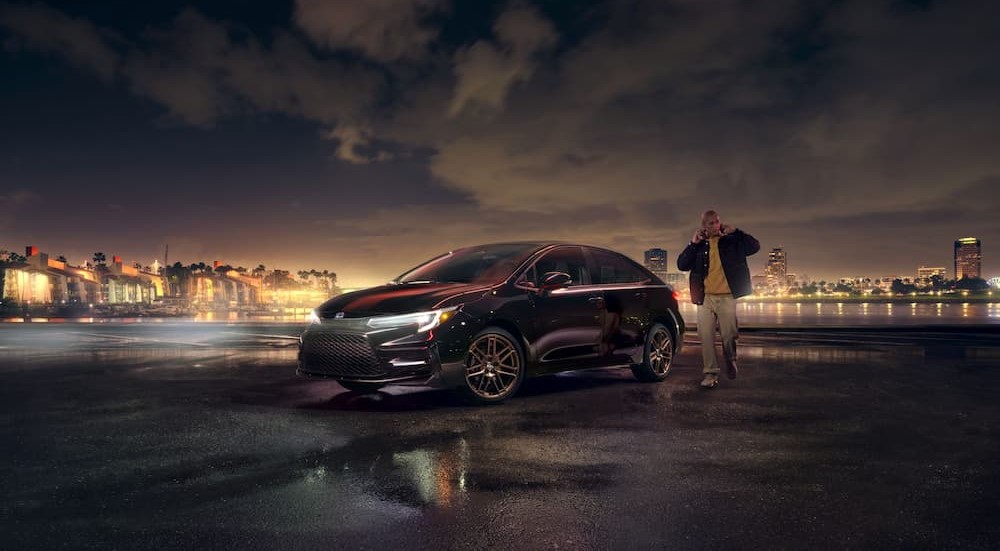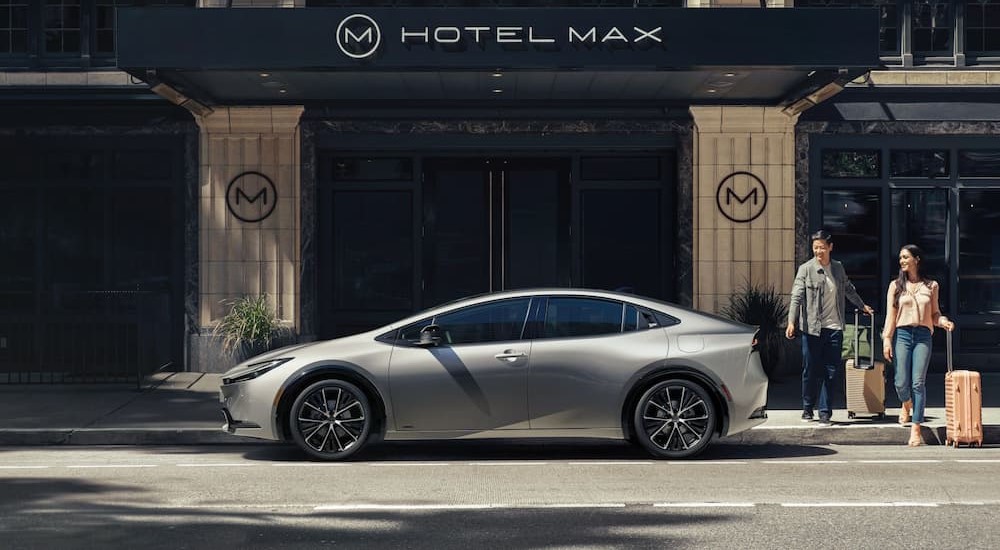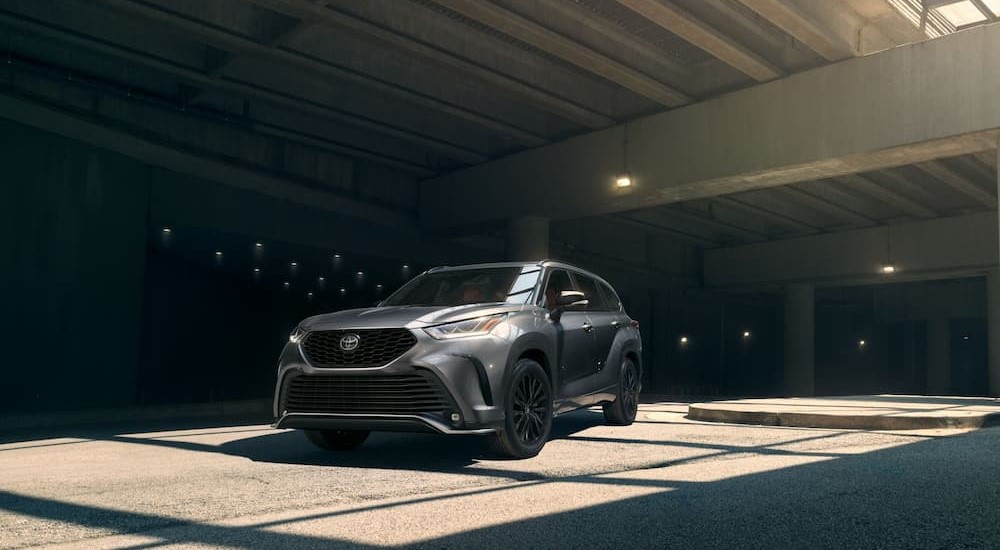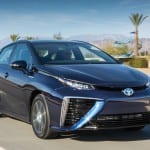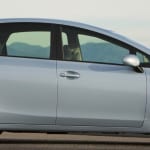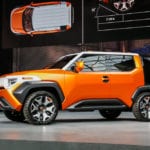Perhaps no other automotive brand has disrupted business as usual like Toyota. From the moment this wildly popular Japanese automaker first entered the US market, its impact on buyers and competitors has been staggering. From the mid-60s, when fuel scarcity threatened to end America’s love affair with big-block V8 engines, to today, as the electric vehicle wars ramp up, Toyota always seems to be positioned at the forefront of new technology.
Whether it was the game-changing Corona, which put Toyota on the map in this country, or today’s fuel-efficient hybrid SUVs, Toyota masterfully intuits what drivers want and delivers it in sedans and SUVs that lead their respective categories. Don’t take my word for it either: the RAV4 is one of the most popular crossover SUVs in the world, and models like the Camry and Corolla have been popular sedans for decades. You don’t need to visit a new or used Toyota dealer to know what I’m talking about today.
Building a brand takes a long time, especially when the competition is fierce. Today, the company’s “Beyond Zero” vision outlines a path to carbon neutrality, yet another bold goal that positions Toyota to dominate the country’s transition to battery power.
Fuel Efficiency Right When America Needed It
As the US increased its dependency on foreign oil, American automobile manufacturers churned out massive, heavy sedans with equally massive appetites for fuel, setting the stage for a coming gas crisis. Manufacturers like Cadillac and Ford established their reputations by building ever-larger “land yachts” that gulped fuel and returned embarrassingly low fuel economy ratings.
No one cared, that is, until the Yom Kippur War triggered a political firestorm that resulted in OPEC cutting off oil supplies to the United States. Gas prices quadrupled, and then supplies dried up, leading to hours-long lines at gas stations around the country. Enter Toyota (among other Japanese automakers) with a lineup of compact vehicles designed for fuel efficiency. By the 1975 model year, Toyota’s annual sales volume had ballooned to 283,909 units, achieving the highest sales figures of any imported automotive brand.
The Big Three––Ford, General Motors, and Chrysler––struggled to keep up, giving Toyota the competitive edge it needed to establish a foothold in the American market, riding the fuel crisis, and delivering a practical alternative to Detroit’s oversized, overpowered fleet. By 1977, Toyota had reached 400,000 units sold and gained the trust of a country that had enough with overpaying for gas and enduring long lines at the fuel pump.
The Most Recognizable Nameplates in the Industry
Even if you aren’t a fan of Toyota, I bet that you could name one model without even thinking about it. Either you’ve driven one yourself, been a passenger in one, or seen them out and about. Models like the Prius, 4Runner, RAV4, Tacoma, and more have just become a part of our day-to-day lives, so it would be impossible to say which one is the most recognizable. However, we can narrow down a few examples.
What do the Toyota Camry and Corolla have in common? For starters, these iconic vehicles have achieved unprecedented brand recognition and customer loyalty. Since its US launch in 1982, the four-door Camry sedan has attracted buyers for its practicality and affordability, the same reasons many first-time buyers opted for a Corolla, which pre-dated the Camry by over a decade.
Both models embodied Toyota’s primary selling points at the time: dependability and quality. Toyota has ridden that reputational advantage for decades, moving more than 1.5 million Corollas per year across a global market that can’t seem to get enough, even in the wake of the SUV revolution. Toyota is the second best-selling automotive brand in the United States, but only by a slim margin. For the 2022 model year, Ford outsold Toyota by fewer than 9,000 units.
One quick look at the 2024 Toyota lineup reveals a litany of recognizable nameplates that have stood the test of time. Still, within each model, Toyota innovates and modernizes, offering newer versions with sought-after features, like hybrid powertrains, advanced driver-assist technology, and fuel efficiency ratings that continue to lead the industry.
First-To-Market Innovations
If you don’t believe Toyota is instrumental in guiding the future of automotive technology, consider one word: Prius. Though mocked early on for its poky acceleration and egg-shaped body, the Prius represented a game-changing shift for the auto industry. Originally designed as a “car for the 21st century,” the disruptive Prius found its footing amidst the earliest efforts to address climate change. Specifically, the Prius won the hearts of Californians looking to reduce emissions and address a chronic smog problem.
Ushering in Y2K, the first-ever 2000 Prius came with a sub-$20,000 starting MSRP and a hybrid powertrain that catapulted fuel economy ratings and won over environmentally conscious early adopters. Drivers reported nearly 50 MPG on the highway and enjoyed access to California’s coveted carpool lane even without passengers. The early Prius model years polarized American drivers, with some expressing distaste for its dull design and lack of acceleration. Owners didn’t seem to mind, instead enjoying substantially lower ownership costs and relatively low monthly payments.
Flash forward to the current model year, and the newest Prius looks nothing like its predecessors. Sleek LED exterior lighting, a more powerful engine, and available all-wheel drive highlight the Prius’s advantages. Fully outfitted 2024 Prius Limited AWD models include futuristic features like a fully fixed glass roof and an oversized infotainment touchscreen with wireless smartphone connectivity and app-based functionality that keeps everyone connected while on the go.
Hybrid Technology
Toyota is known for its popular, mass-produced lineup of hybrid-powered vehicles. Toyota’s hybrid models, which include some of the automaker’s best-selling vehicles, are designed specifically for buyers who aren’t quite ready to lean into fully electric powertrains. Almost all of Toyota’s models have a hybrid option.
The 2024 Toyota Prius, for example, has EPA-estimated fuel efficiency ratings of up to 57 MPG in the city and 56 MPG on the highway. The Prius is not the only hybrid in Toyota’s lineup, though. Let’s consider the 2024 Toyota RAV4 hybrid. This model has an EPA-estimated fuel efficiency rating of 41 MPG in the city and 38 MPG on the highway. For context, the traditional gas-powered engine yields the RAV4 27 MPG in the city and 35 MPG on the highway.
No other manufacturer can claim they have put forth such a selection of impressive (and popular) hybrid models.
Toyota Leads the Industry
Whether saving at the pump is a priority or families are looking for roomier, safer, and more connected vehicles, Toyota understands that winning buyers means designing models that tick all the boxes. Amidst all of this innovation, Toyota holds firm to its core values: building cars, trucks, SUVs, and minivans that are durable, reliable, and affordable.
